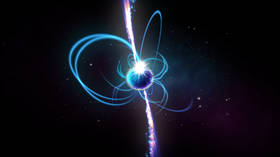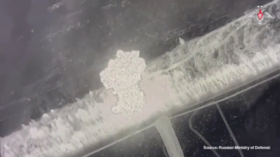Black hole theory questioned after new star defies rules

Astronomers in the UK have discovered a “hypermassive” neutron star which emitted radiation for far too long before collapsing into a black hole, bringing into question some of the assumptions about the scientific phenomenon. Their observations were published on Thursday.
A team at the University of Bath in Somerset observed a star binary merging and creating a “hypermassive” neutron star, which emitted gamma rays for over a day before it collapsed into a black hole. The result, dubbed GRB 180618A, is about 10.6 billion light-years away and was caught by NASA’s orbiting Neil Gehrels Swift Observatory. A robotic observatory in the Canary Islands then zoomed in on the aftermath.
“Such a massive neutron star with a long life expectancy is not normally thought to be possible,” Dr. Nuria Jordana-Mitjans, head author of the study, told the Guardian. “It is a mystery why this one was so long-lived.”
Jordana-Mitjans and her colleagues interpret the “unusual spectral and temporal properties” of the object “as evidence of a highly magnetized, spinning neutron star,” they wrote in their Astrophysical Journal study. The discovery, they said, “opens a new era for searches of gravitational wave counterparts with fast-cadence surveys.”
Neutron stars are believed to be the collapsed cores of supergiants, created by supernova explosions, with a radius of about 10 kilometers and a mass of about 1.4 of the earth’s sun. They are held together by a phenomenon called “neutron degeneracy pressure” and collapse if their mass exceeds a certain limit.
“They’re such weird exotic objects,” said Professor Carole Mundell, a co-author of the study. “This is the first direct glimpse that we may have of a hypermassive spinning neutron star in nature,” she added. “My hunch is we’ll be finding more of them.”
The gamma-ray bursts that accompany the collapse of neutron stars are the most energetic events in the universe since the Big Bang, according to The Guardian. They were believed to originate from the poles of the newly formed black hole, but the new observations show them emanating from the neutron star itself.













